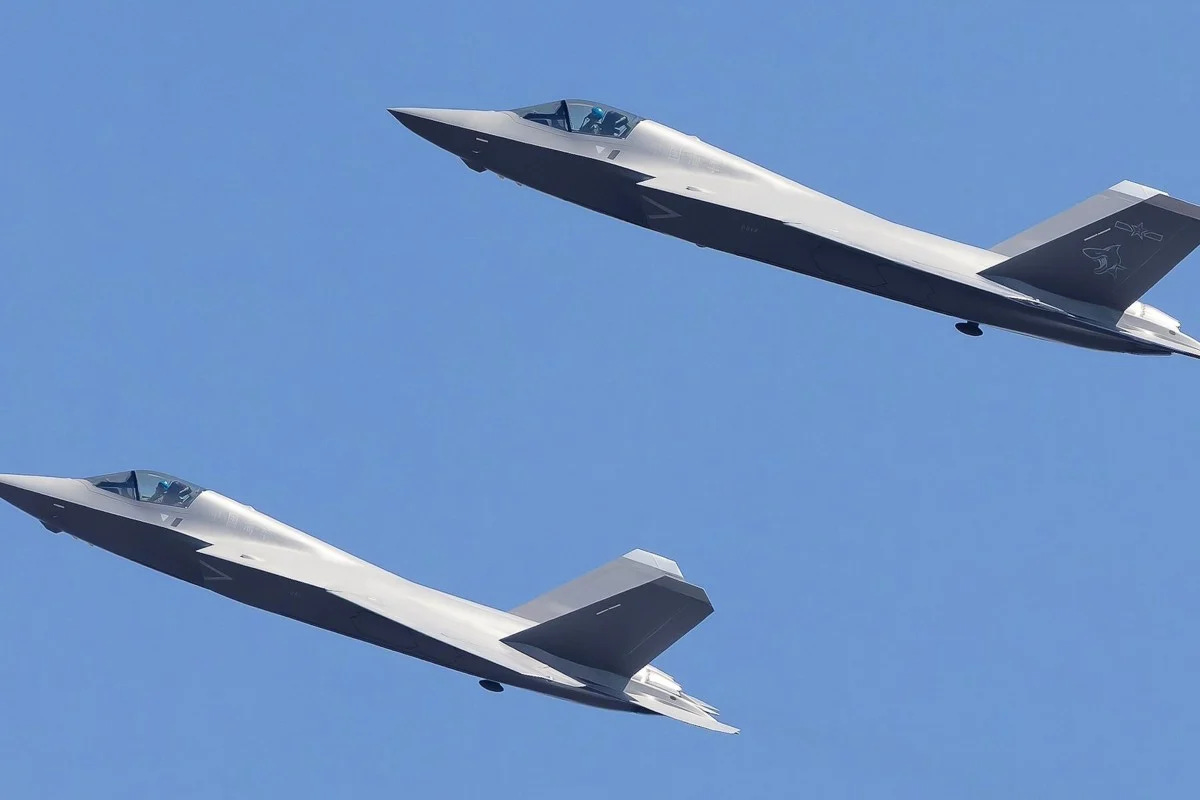China This Week: Tokyo’s Strategic Shift, Global Research Integrity Crisis, China Builds World’s Largest Dam
This week in China, we explore key shifts in its domestic and foreign policy landscape.
China Quote 🗩
“We should not only focus on how much GDP has grown and how many major projects have been built, but also on how much debt is owed,”
Xi Jinping’s warning about 3 Pats officials.
Tokyo’s Turning Tides: What Does It Mean for China?
The recent electoral gains made by right-wing populist parties in Japan are indicative of a possible recalibration of Japan-China relations. The long running Liberal Democratic Party (LDP) suffered a blow by losing its majority in the Upper House elections in July 2025. Sanseito and the Conservative Party of Japan saw a significant improvement in their electoral performance pointing to a larger acceptance of nationalist narratives in Japan.
The right-wing turn is not limited to domestic politics alone and could possibly impact East Asian politics including Tokyo’s approach to Beijing.
Japan-China's bilateral relationship is a complex intermesh of cultural exchanges, a painful wartime history and deep economic times. The brutal realities of the Second Sino-Japanese War and the lingering resentment around it continues to cast a shadow on present ties.
Despite having voluminous trade that exceeds $200 Billion USD annually, the political relationship between the two have been fraught including the lack of any meaningful diplomatic exchanges at the top-level. Issues like the Yasukuni Shrine remain Japan’s failure to adequately address its past crimes against the Chinese.
The Right-Wing Shift
Sanesito’s rise reflects the growing disillusionment of Japanese voters with rising prices and worsening economic conditions of the country – this discontent is extrapolated and channelised in exaggerated nationalist and anti-migration narratives by the right-wing.
With its “Japan First” campaign, the Sanseito Party is advocating for stronger immigration control, reduced globalism, limited international commitments by Japan and increasing military expenditure. The nationalist surge has seen resonance with younger voters who believe that Tokyo should be more assertive and less apologetic in how it conducts its activities.
The party is founded by a young YouTuber who declared Donald Trump and Germany’s AfD to be his inspiration. Like the racist rhetoric used by Trump and the AfD, Sohei Kamiya’s political campaign revolves around blaming immigration for issues like rising property prices.
Similarly, the Conservative Party of Japan promotes a revisionist vision of the global order where Japan should return to the emperor-led political order, it is in denial of all the war crimes committed by Japan including Nanjing and promotes a nativist social order. These trends reflect a larger trend of entrenched nationalism and global isolation worldwide.
What Could Happen with China?
For China, the rightward pivot in Japanese politics could mean a re-posturing of Japanese security. The stronger foreign policy stances adopted by these parties especially on China and North Korea coupled by their assertion of closer ties between Japan and Taiwan, could lead to Beijing reacting strongly.
The revision of Article 9 as proposed by the conservatives that seeks to revoke Japan’s limitation on having a standing army could add to China’s insecurities. Japan has been divided on the issue of legitimising their Self-Defense Forces for a while now. Under former Prime Minister Shinzo Abe, the push for revoking Article 9 was strong.
To introduce a constitutional amendment in the Japan it requires a two-thirds majority in both houses of the Diet and a public referendum. The increased presence of the far-right in Japanese politics could induce a certain sense of urgency in the debate. This could be seen as a provocation by the Chinese and would significantly increase the risk of misinterpretation and miscalculation in the region – especially the East China Sea and Taiwan Strait.
The tensions in Sino-Japan relations have been palpable for a while now – in June 2025, Japan protested the construction of multiple Chinese structures in the East China Sea. The East China Sea is a hotbed of trouble as the Chinese Coast Guard has frequently entered Japanese territory especially near the Senkaku Islands (Diaoyu Islands in China) without permission or intimation.
Territorial disputes like this have had consequences on both countries in the past with economic consequences like when China limited rare earth minerals to Japan after a 2010 incident. While trade has improved between the two countries, political tensions could lead to vulnerabilities. The conservative parties that want to limit foreign investment and are advocating for more protectionist measures, risk interrupting trade flows between the two countries.
While immigration is the top concern for Japan, if the rightward parties can convert this into stricter policies, significant economic hurdles may emerge in the future for deeper economic cooperation and people-to-people interactions. Japan already encourages creating supply chains away from Chinese supply chains, a more nationalist government could deepen this even at the cost of economic efficiency.
China’s growing presence in Southeast Asia where it promotes a China-centric world order could find contention with the Japanese. Tokyo has worked to strengthen relations with countries that are critical to China like the Philippines.
A more nationalist Japan would want to bolden such measures and could even adopt a more aggressive stance in regional developments. Territorial disputes around the Senkaku islands could be a potential hotspot but it depends on how astutely diplomacy can be deployed by either side.
Conclusion
While Japan has seen the rise of such fringe right-wing politics in the past as exemplified by Shintaro Ishihara, whether it is able to sustain it is the question. Historically, the right-wing has been known to have diplomatic spats, increased miliary spending and a more aggressive posturing which leads to increased insecurity and distrust.
Beijing’s reaction to Japan will be calibrated based on the path chosen by such parties if they are able to achieve national consensus. Presently, there is little evidence on the management of China and the situation changing dramatically in the near future.
The RI² Index and the Global Research Integrity Crisis
Citations have become central to how universities are evaluated, driving institutional strategies aimed at improving global rankings. But this overreliance on bibliometric indicators such as citation counts and publication volumes has raised concerns about research integrity. In response, Professor Lokman I. Meho developed the Research Integrity Risk Index (RI²), the first composite metric that assesses institutional risks related to research governance and publishing ethics. Unlike rankings focused on quantity, RI² evaluates integrity by combining two indicators: the retraction rate (R Rate), measuring retracted publications per 1,000 articles, and the delisting rate (D Rate), tracking publications in journals removed from Scopus and Web of Science. These are normalised and averaged to produce a composite score, placing institutions into five categories: Red Flag, High Risk, Watch List, Normal Variation, and Low Risk.
The June 2025 edition of RI² draws on an extensive dataset: 42,732 retracted articles, 974 delisted journals (855 by Scopus and 169 by Web of Science), and 124,945 articles published in 206 delisted journals between 2023 and 2024. The global retraction rate for 2022–2023 stands at 2.2 per 1,000 publications. However, disciplinary disparities are stark, mathematics (9.3) and computer science (7.6) lead, while arts and humanities remain low at 0.2.
Geographically, South Asia, led by India, emerges as the epicentre of research integrity risks. Of the 92 institutions assessed in the region, 71 are from India, which accounts for 27 of the top 100 high-risk universities globally. Some Indian institutions report alarming retraction rates exceeding 30 per 1,000 articles, alongside heavy reliance on delisted journals. These patterns are concentrated in engineering and applied sciences, particularly in Andhra Pradesh, Tamil Nadu, Telangana, and Karnataka.
In East Asia and the Pacific, 529 institutions were evaluated, with China dominating (334 universities). Integrity risk scores in China vary, but the country’s rapid growth in publication volume has been accompanied by concerning trends in delisted journal use. Southeast Asia also shows emerging vulnerabilities: Indonesia’s Bina Nusantara University ranked 11th globally with an 18% D Rate, while Malaysia (15 institutions), Indonesia (13), Thailand (9), and Vietnam (4) show limited but notable exposure.
Other regions present a mixed picture. Europe and Central Asia, with 470 institutions, display relatively stable integrity profiles, though Eastern Europe and Turkey show uneven risks. North American universities generally score low, supported by robust auditing and integrity mechanisms. Latin America, Sub-Saharan Africa, and the Middle East show smaller but significant clusters of high-risk institutions, particularly in Saudi Arabia and Iran.
RI²’s strength lies in its transparent, verifiable approach, shifting evaluation from sheer research output to ethical scholarship. Its risk tiers are not accusations of misconduct but signals for institutions to examine governance structures, reform incentives, and reduce dependence on predatory publishing practices.
Read RI2 Research Integrity Risk Index at https://sites.aub.edu.lb/lmeho/methodology/
Read Gaming the Metrics? Bibliometric Anomalies and the Integrity Crisis in Global University Rankings by Professor Lokman I. Meho at https://www.biorxiv.org/content/10.1101/2025.05.09.653229v3
Economic Activity🏦
China VC Funds Tap Global Investors for $2 Billion in Comeback
Bloomberg reports that China’s leading venture capital firms are launching new dollar-denominated funds worth over $2 billion, signalling renewed global interest in Chinese startups. Firms like LightSpeed China Partners are courting overseas investors with targeted bets on sectors like AI and deep tech, marking a cautious re-engagement with China’s private tech ecosystem.
‘No longer a pet project’: Tiny Beijing stock exchange becomes IPO hub
Financial Times reports that the Beijing Stock Exchange has received more IPO applications in 2025 than Shanghai and Shenzhen combined, as small-cap tech firms flock to its looser listing rules. Once dismissed as symbolic, the exchange is gaining traction due to China’s push for “little giants” and investor interest in domestic AI hardware and automation.
Trump’s Trade War Is Upending China’s Factory Floors
Bloomberg reports that Chinese manufacturers are scrambling to adjust as Trump-era tariffs and unpredictable trade negotiations disrupt global supply chains. Companies like Velong Enterprises, supplying to Walmart, are struggling to plan production and pricing amid uncertainty. Many are exploring automation, new markets, or relocating to Southeast Asia to stay competitive.
China starts building world’s biggest hydropower dam
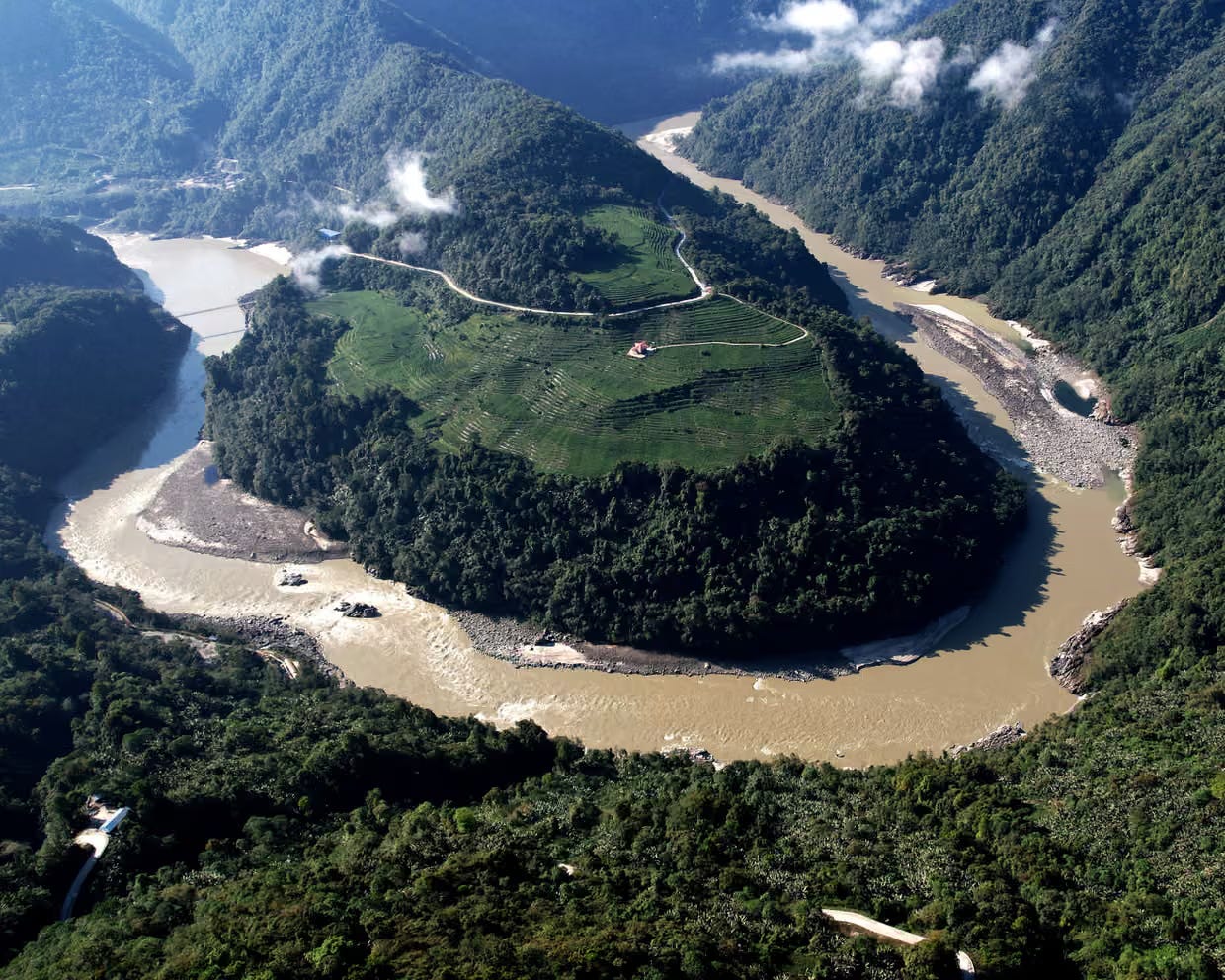
The Guardian reports that China has begun construction of the world’s largest hydropower dam on the Yarlung Tsangpo river in Tibet, calling it the “project of the century.” The 1.2tn yuan megadam has raised alarm in India and Bangladesh over water diversion and ecological risks. Tibetan groups and environmentalists also fear displacement, biodiversity loss, and tectonic instability.
Inside China🐉
Xi Jinping warns Chinese officials against over-investment in AI and EVs
Financial Times reports that President Xi Jinping has criticised local officials for fuelling overcapacity and reckless spending in artificial intelligence and electric vehicles. Xi warned against projects driven by short-term GDP goals and accused “three pats” cadres of evading accountability. His comments signal Beijing’s concern over deflationary price wars and inefficient industrial duplication across provinces.
PLA Daily underscores absolute Party loyalty amid ongoing military purges
Sinocism reports that the PLA Daily has launched a new commentary series reaffirming the ideological primacy of political cadres in the military. The first article stresses unwavering loyalty to the Party as the “foremost political requirement,” fuelling speculation that the recent PLA purges involve more than corruption—possibly political disloyalty or factionalism.
China’s fifth-gen J-35: rare close-up images suggest stealth jets ready for Fujian carrier
South China Morning Post reports that new close-up images of the PLA Navy’s J-35 stealth fighter suggest it is nearing operational readiness aboard China’s Fujian aircraft carrier. The jets bear naval markings and the “Flying Shark” insignia, indicating formal integration. Observers say these signs point to the fighter entering low-rate production, potentially marking China’s next leap in blue-water power projection.
‘Wahaha Princess’ Reveals China’s Uncommon Prosperity
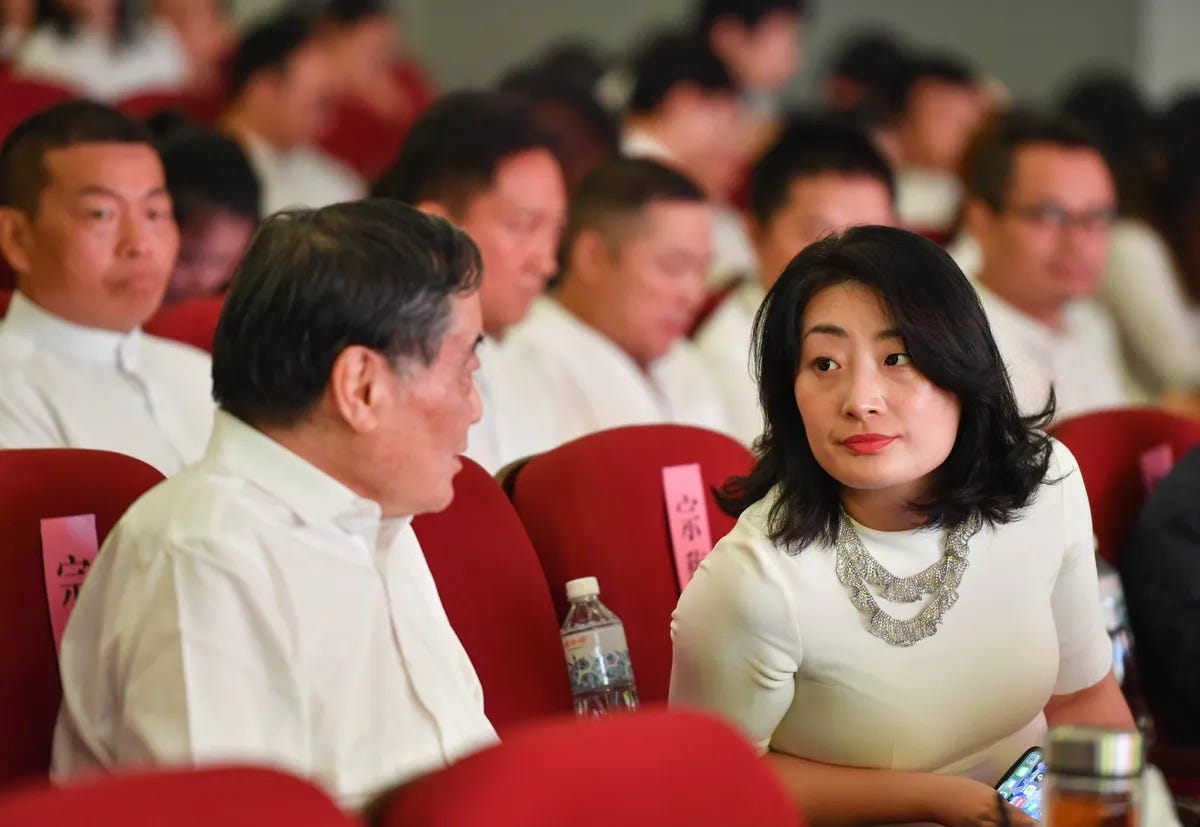
Bloomberg columnist Shuli Ren writes that a $2 billion inheritance battle over the Wahaha beverage empire has sparked debate over hidden family wealth and the concentration of corporate power in China. The public emergence of Kelly Zong’s alleged half-siblings—previously unknown—has raised questions about succession, secrecy, and growing resentment toward China’s ultra-rich amid economic anxiety.
China and the World🌏
China Flexes Muscles at U.N. Cultural Agency, Just as Trump Walks Away
The New York Times reports that China is expanding its influence within UNESCO as the US formally withdraws from the agency. With Beijing pushing for greater control over education, World Heritage designations, and artificial intelligence policy, Washington’s exit removes a key counterweight. A Chinese official now holds a top post at UNESCO, reflecting Beijing’s growing soft power through the institution.
Trump NATO Envoy Warns China Over ‘Subsidizing’ Russia’s War
Bloomberg reports that US ambassador to NATO Matthew Whitaker accused China of effectively subsidising Russia’s war in Ukraine. He warned that Beijing is using Russia to distract the West from other strategic threats and hinted at new tariffs unless Moscow agrees to peace terms. The remarks signal a tougher China posture under the Trump administration.
BlackRock Restricts Use of Company Devices for China Travel
Bloomberg reports that BlackRock has instructed employees travelling to China to avoid carrying company laptops and instead use loaner phones. The internal memo, effective July 16, reflects rising corporate caution about cybersecurity and surveillance risks associated with business operations in China, amid broader tensions between Beijing and Western firms.
China blocks US federal employee from leaving
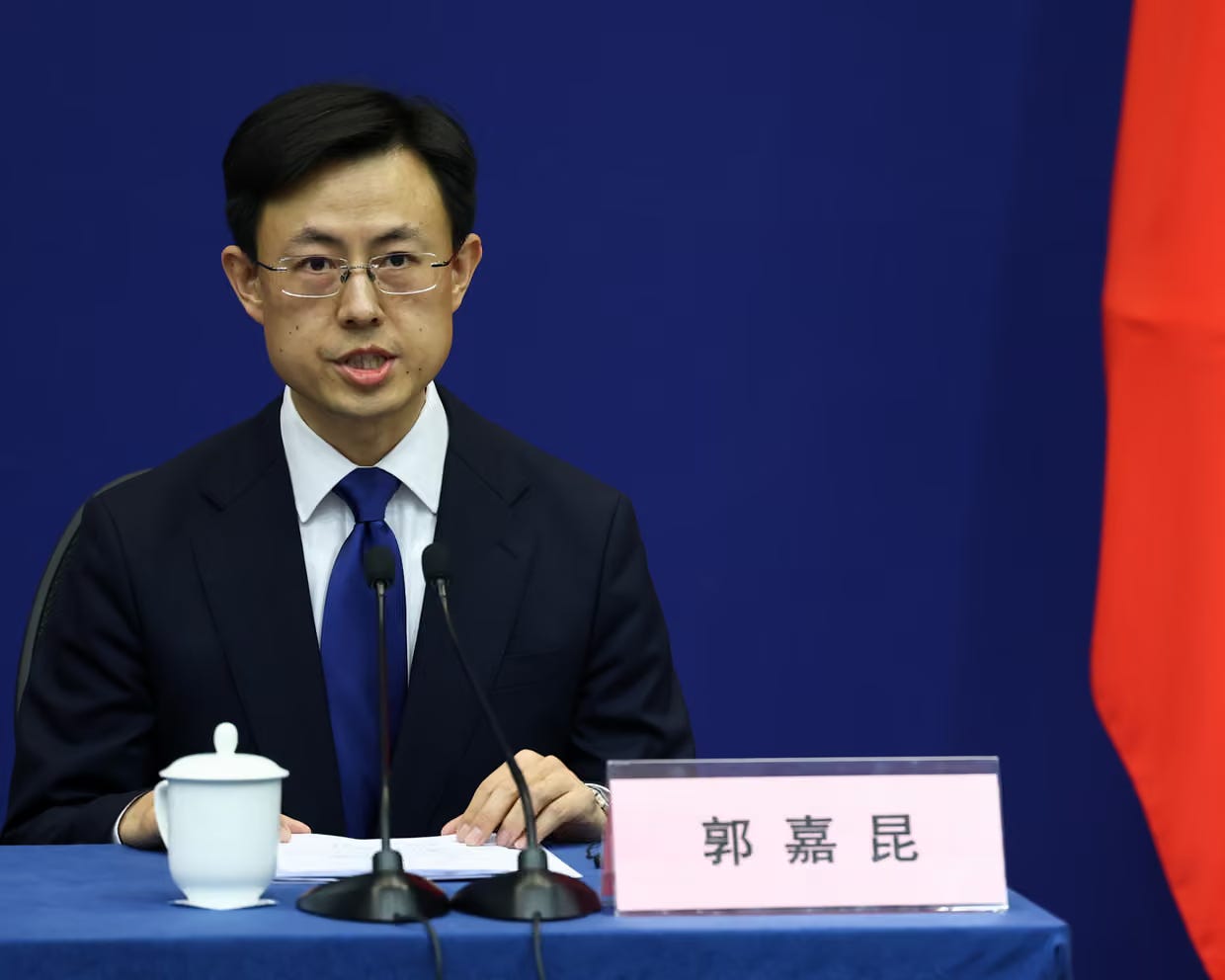
The Guardian reports that China has imposed an exit ban on a US Patent and Trademark Office employee visiting in a personal capacity. The case, reportedly triggered by visa misrepresentation, marks the first known instance of such restrictions on a US federal worker. Another American, banker Chenyue Mao, was also barred, highlighting China’s growing use of exit bans as diplomatic and legal tools.
Tech in China🖥️
China’s BYD calls UK electric car subsidies ‘stupid’ as it expands in Europe

Financial Times reports that BYD has criticised the UK’s new EV subsidy scheme, which excludes Chinese-made cars, calling it a “stupid” and short-sighted policy. Despite the move, BYD plans to expand its footprint in Europe, pledging over 5,000 UK jobs and opening 280 exclusive dealerships. The company will also localise production in Hungary and Türkiye.
Microsoft says Chinese hacking groups exploited SharePoint vulnerability in attacks
CNBC reports that Microsoft has identified three China-linked hacker groups—Linen Typhoon, Violet Typhoon, and Storm-2603—as having exploited a vulnerability in its SharePoint software since early July. The breach prompted urgent security patches and renewed scrutiny of Chinese cyber-espionage activities, especially after past attacks on Exchange Server and US government systems.
China tightens quality oversight over commercial space projects
SpaceNews reports that China has introduced new quality control regulations aimed at standardising and supervising its rapidly expanding commercial space industry. The move seeks to enhance safety and reliability as private firms, such as Deep Blue Aerospace, advance launch capabilities. It marks Beijing’s broader push to formalise private sector participation in national space goals.
Decypher Data Dive📊
Belt and Road Initiative (BRI) engagement has reached USD 1.308 trillion since its establishment in 2013, comprising approximately USD 775 billion in construction contracts and USD 533 billion in non-financial investments. In the first half (H1) of 2025 alone, Chinese construction and investment activity under the BRI hit a record-breaking USD 124 billion, surpassing the entire 2024 total of USD 122 billion.
The country with the highest construction volume in 2025 H1 was Nigeria with about USD21 billion (up from 206 million in 2024 H1), followed by Saudi Arabia (USD 7.2 billion).
Image of the Week📸
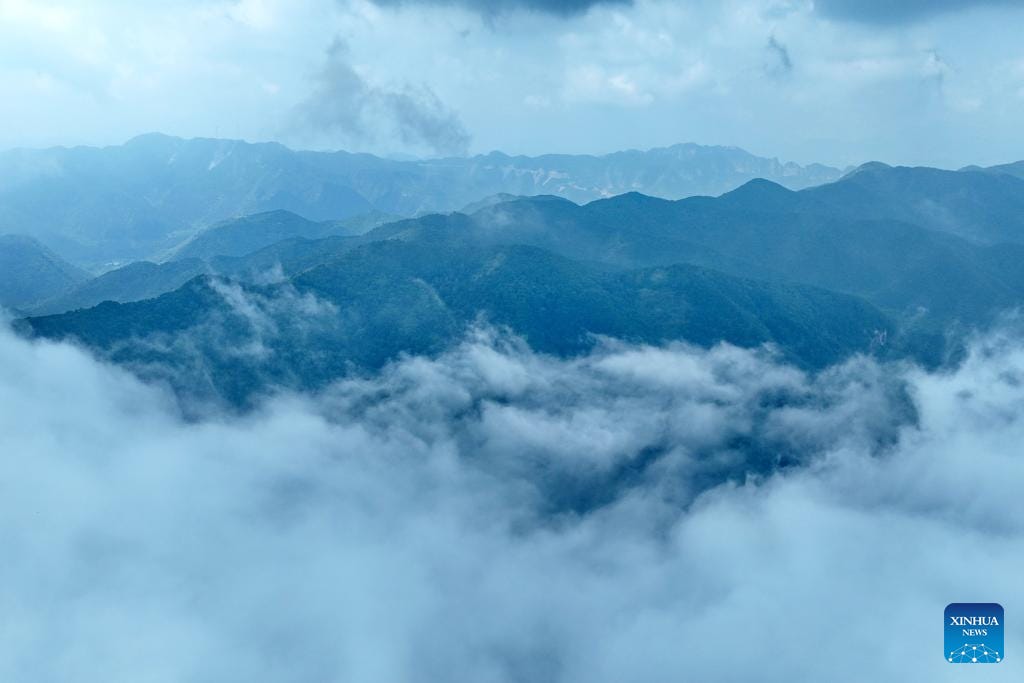
— — —
Microessay by Priyanka
Analysis by Shivani
Data By Bhupesh
Edited By Aurko
Produced by Decypher Team in New Delhi, India


